Learn how to keep your knee joints healthy.
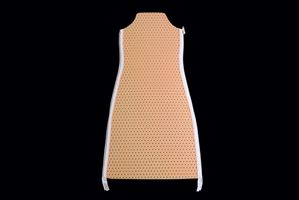
- orthopedic products
- Purpose
- PIRO TYPES
- 4 STEPS TO YOUR CHILD’S COMFORT
- 3D scanning
- Modeling
- 3D printing
- Shipping of the orthosis
- 3D scanning
- Modeling
- 3D printing
- Release of the orthosis
- Information about the company.
- Description
- About the company.
- Types of bandages for the ankle joint
- How to properly put on an ankle orthosis
- Advantages of Turbocast material:
- Bandage for the ankle joint (orthosis)
- Types of ankle orthoses
- What are the advantages of an orthosis?
- Are there any contraindications?
- Types of ankle braces
- Overview of the best ankle orthoses
- Immobilizing ankle orthosis EST-088
- Rotary ankle orthosis with variable angle FS 2952
- Ankle orthosis with lacing and stiffening ribs AS – ST/H
orthopedic products
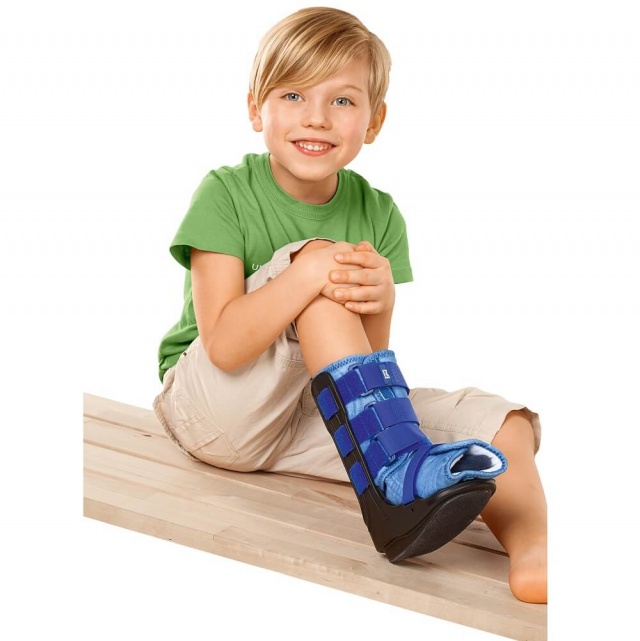

An ankle brace for children is an orthopedic product that tightly locks the child's ankle joint. This immobilization support can be provided with plates specially designed for the metatarsal, the descending foot with additional side inserts and fasteners.
Purpose
Ankle orthoses for children are prescribed for:
– For broken bones of the foot and ankle.
– For sprains, tears and breaks of ligaments, tendons of the lower leg and foot.
– In diseases of the ankle joint, irreversible changes.
– In rehabilitation after injuries, bruises of the heel bone, after operations in the foot area, in cases of severe swelling.
Most products consist of a light, stable construction with a monocentric joint. It is possible to adjust the flexion and extension angle. This angle is adjustable from 0 to 45 %. The sole of the orthopedic product has a low profile. To avoid chafing, the foot and lower leg are padded with a special breathable, hypoallergenic material.
Ultra-thin fasteners enable the orthosis to be removed quickly and comfortably adapted to the anatomical shape of the ankle joint in children.
PIRO TYPES
The gait classification we use in Amsterdam allows for optimal adjustment of the orthosis for children with cerebral palsy.
The Piro orthosis is adapted to the gait pattern.
During the 3D simulation, we adjust the position of the foot and ankle, the heel support, the height of the instep, the presence or absence of a joint, the movement of the ankle and much more.
We are proud to present you 5 different types of Pyro from which you can choose the perfect fit for your child.
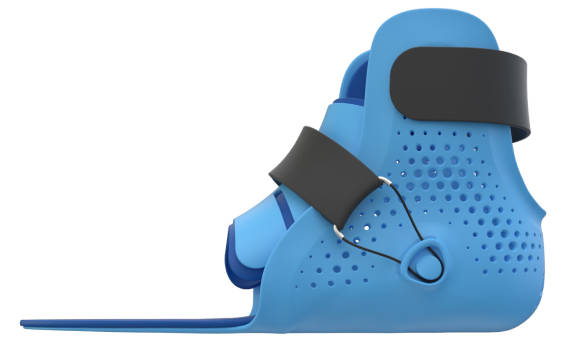
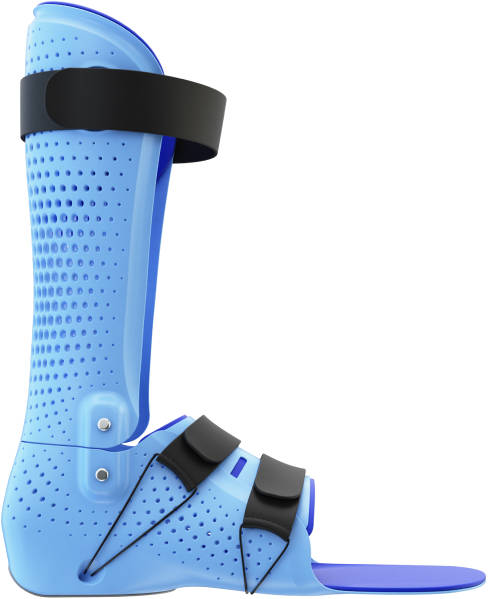
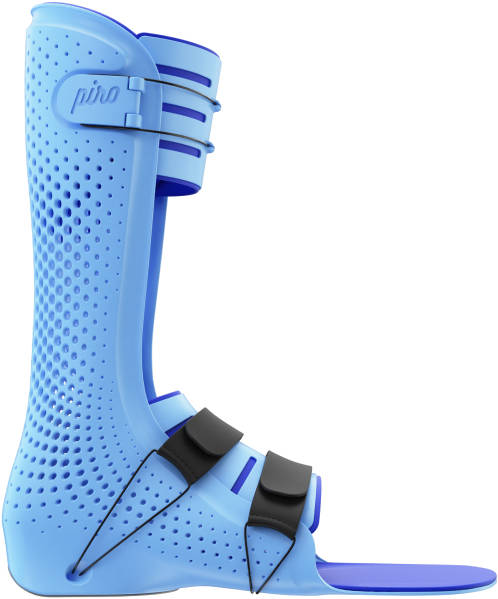
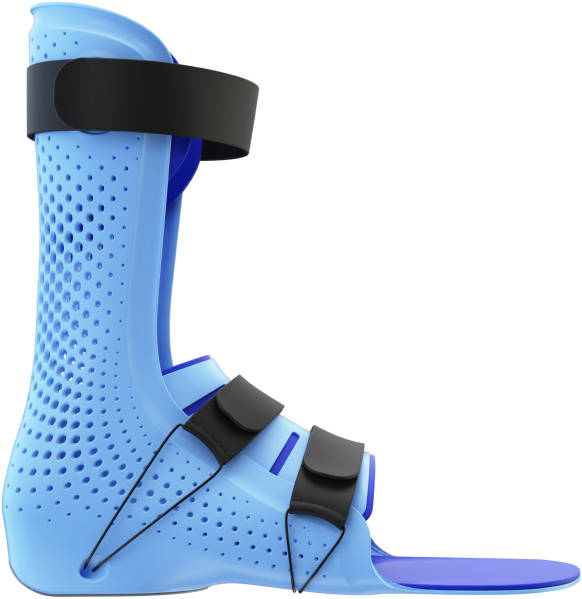
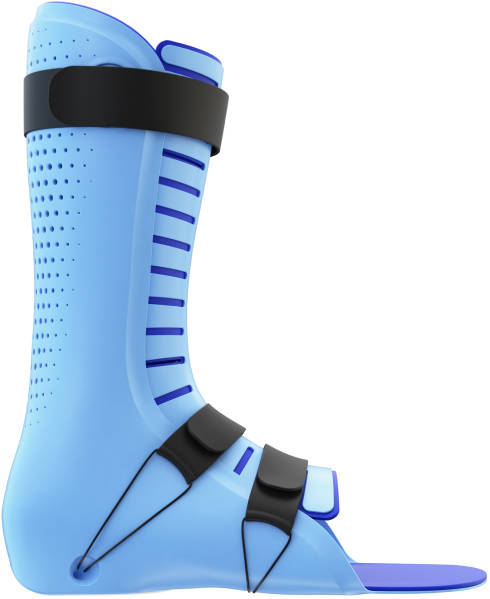
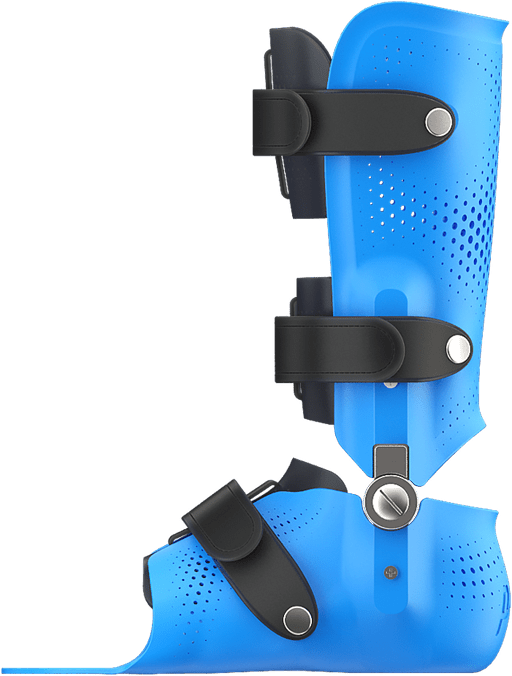
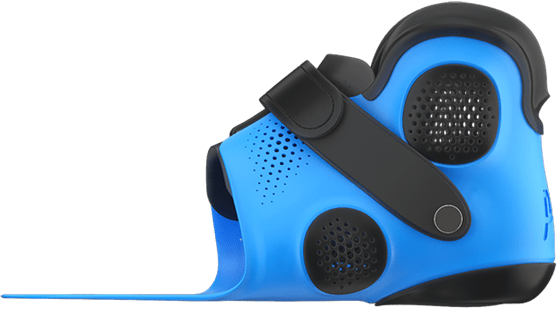




4 STEPS TO YOUR CHILD’S COMFORT
Get a Piro orthosis for your child,
contact Orthotis Premium using any contact form.
Advice from our top specialists
3D scanning
The 3D scanning technology ensures that the Pyro fits your child perfectly.
Modeling
Your therapist will take care of the ideal shape of the orthosis, and all you have to do is choose the appearance of the orthosis
3D printing
We only print the orthosis using the latest 3D printers.
Shipping of the orthosis
The Piro orthosis will be shipped after 2 weeks. Start an active life with the new Piro orthosis
3D scanning
3D scanning technology ensures that the Piro orthosis is perfectly tailored to your child.
Modeling
Your therapist will take care of the ideal shape of the orthosis and you can choose the design
3D printing
We start printing and only use the latest 3D printers to create the orthosis.
Release of the orthosis
The Pyro orthosis will be delivered after 2 weeks. Start your active lifestyle with the new Piro orthosis
Information about the company.
© 2022, PHARMA SI PLUS LLC, SURNAME: 7118504936, KP: 771501001, OGRN: 112715400560
processing of personal data
I graduated from Saratov State Medical University in 1996. Graduated from Saratov State Medical University with a degree in medicine.
Completed his internship at St. Petersburg State Medical University from 1996 to 1997, specializing in general medicine. He completed his internship at the St. Petersburg Institute for Advanced Medical Studies in the department of traumatology, orthopedics and prosthetics.
From 1997 to 2008 he practiced as a trauma surgeon in St. Petersburg. – From 1997 to 2008 he worked as an orthopedic traumatologist in the company of prosthetics and orthopedics in Penza, from 2000 he was the head of the medical department of this company. He repeatedly received advanced training courses at leading companies in Russia and abroad.
Since 2008. – Worked at OOO Orthopedic Industry Moscow Energia, trained in Germany, deals with complex and innovative orthoses.
2010-2012. – Head of the training and rehabilitation center Medi Rus Ltd. Co-author of 6 scientific papers.
Description
A tunic is a product used to immobilize a joint. The tunic is used when it is necessary to eliminate the active and passive movements of the joint and keep the limb in the correct position to prevent the development or recurrence of joint deformities. The orthosis eliminates all movements in the joint of the lower limbs. It is designed as a one-piece product without joints. Once put on, the orthosis firmly encloses the joint and stabilizes it, thereby relieving the joint and preventing damage to the joint capsule and ligaments. Tunics are available in designs that fix a segment of the limb without restricting joint movement.
- Rehabilitation after surgical treatment of the knee joint;
- Rehabilitation of the tendon and ligament system of the knee joint;
- stable fractures of the ankle joint
- Paralysis and paresis of the foot;
- Postoperative and conservative treatment of fibular fractures;
- Rehabilitation after fractures of the lower third of the tibia and foot.
About the company.
© 2022, PHARMA SI PLUS LLC, IRN: 7118504936, KP: 771501001, OGRN: 112715400560
Processing of personal data
I graduated from Saratov State Medical University in 1996. I graduated from Saratov State Medical University with a diploma.
From 1996 to 1997 I completed my internship at St. Petersburg State Medical University, specializing in general medicine. He completed his internship at the St. Petersburg Institute for Advanced Medical Studies in the department of traumatology, orthopedics and prosthetics.
From 1997 to 2008 he practiced as a trauma surgeon in St. Petersburg. – From 1997 to 2008 he worked as an orthopedic traumatologist at the Prosthetics and Orthopedics enterprise in Penza, from 2000 he was the head of the medical department of this enterprise. He repeatedly received advanced training courses at leading companies in Russia and abroad.
Since 2008. – He worked in the orthopedic industry Moscow Energia Ltd, received training in Germany and was involved in complex innovative orthoses.
2010-2012 – Head of the Training and Rehabilitation Center of Medi Rus Ltd. – Head of the Training and Rehabilitation Center of Medi Rus Ltd. Co-author of 6 scientific papers.
Types of bandages for the ankle joint
There are several types of associations that are classified according to different characteristics.
- By material. Modern models are made from blended fabrics based on cotton and polymer compounds. Each of these compounds has its own characteristics. Neoprene, for example, has a high density that has a warming effect, and polyester is considered a very durable material that retains its shape and elasticity even when worn for long periods of time. In some models, cotton can be replaced with polyester, which does not irritate the skin.
- Type of exposure. An ankle bandage provides a compression effect (compression), a massage effect (stimulating blood circulation) and a warming effect. Universal products that combine all types of effects are generally not as effective as specialty products.
- Degree of fixation. It can be soft, firm, semi-rigid and adjustable. The latter type of models is more complicated to manufacture and therefore more expensive.
- Fixing elements. These can be Velcro or traditional lacing.
- Degree of openness. The more open the bandage is, the better for the skin. However, strongly open models reduce the quality of fastening and compression.
How to properly put on an ankle orthosis
Let's start by putting on the ankle orthosis. This is pretty simple. Most ankle braces are easy to put on and take off. They can be worn barefoot or with thin socks.
It is not recommended to wear an ankle brace when it is in place. Take breaks every six hours and ventilate the skin.
You can also receive detailed advice on wearing an ankle brace from experienced specialists.
Advantages of Turbocast material:
- secure
Non-toxic, does not cause allergic reactions. No waste, dust or smell. - Moisture resistant
Allows the orthosis to come into contact with water. - Flexible
The orthosis is easy to model and adapts to the exact contour of the area to be treated. - Comfortable
Light weight, no plaster required. Easily removable after recovery. - Practical
Excellent ventilation thanks to the many openings. - Lightweight
- Coated with polyurethane
Thanks to the coated polyurethane, the orthosis can be worn without padding.
If there are any contraindications, consult your doctor
For further information please contact your doctor St,
91 Moscow Ave.
Telephone: +7 (812) 317-67-77
Tel: +7 (812) 317-67-77 Hotline:
8 (800) 555-27-08
The call is free for subscribers in all regions of Russia
Turbocast in Moscow:
Endomedeproject Ltd.
Moscow, Korovinskoye sh. 1, k. 2, room 13
Tel: +7 (495) 649-63-47
OrthoFix Ltd.
620100, Yekaterinburg, Sibirskiy Tract, Bldg. 12, p. 8, Bldg. 302
Telephone: 8 (992) 000-43-96
Email: [email protected]
Bandage for the ankle joint (orthosis)
This medical device is used to immobilize the ankle joint and is one of the treatment options for ankle joint injuries, inflammatory and degenerative diseases of the joint, during the rehabilitation period after injuries, operations, nerve damage and strokes. The ankle bandage fulfills various functions, such as:
- Fixation of the foot in a physiologically correct position, stabilization, relief of the ankle joint...
- Restoration of musculoskeletal function of the lower limbs after injuries, operations and joint diseases.
- Relieves pain and swelling in inflammatory joint and ligament diseases (osteoarthritis, arthritis, ligamentitis, heel spurs).
- Protects the joint and ligaments from injuries and damage during sporting activities and increased physical stress.
- Relieves pain and strengthens muscles and ligaments.
- Correction of foot misalignments, e.g. B. with wobbly feet due to nerve damage or ankle dysplasia.
Types of ankle orthoses
Divided according to the strength and rigidity of the attachment.
- Light fixation (also called soft fixation) – soft fixation of the joint, used in the treatment of minor injuries, arthrosis, to immobilize the foot, for prophylactic purposes, to reduce mild swelling and during sports.
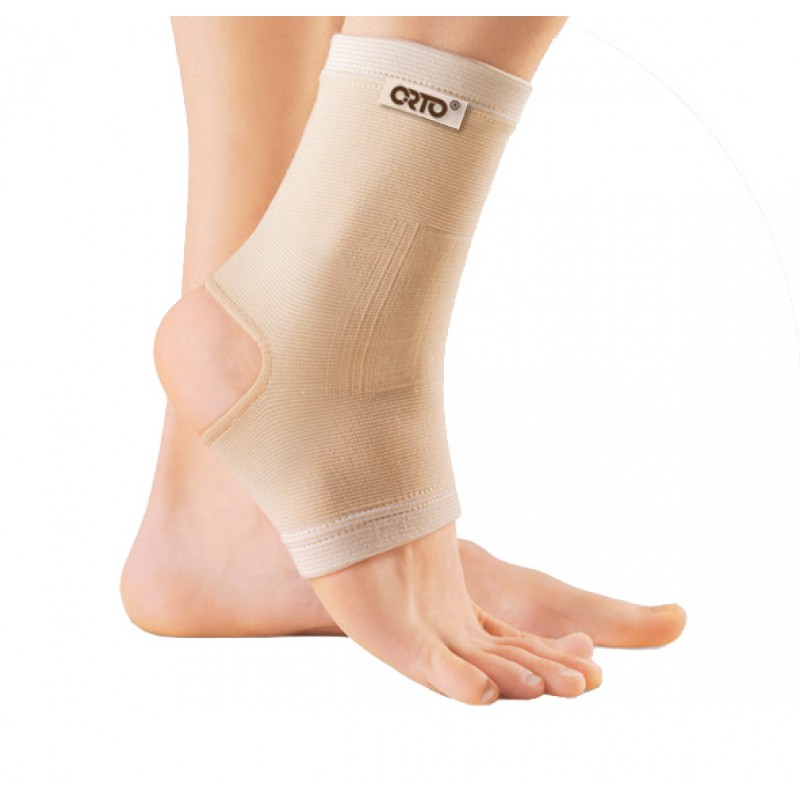
- Medium-firm (semi-rigid joint immobilization) – firm immobilization of the ankle and foot thanks to various insoles (plastic, metal). Suitable for bruises, dislocations, during the rehabilitation period of fractures, after removal of the plaster cast. To prevent fractures during dynamic sports.
- Rigid immobilization – used in severe injuries and fractures as an alternative to plaster casts, as it ensures complete immobilization (fixation) of the joint tissue.
- There are also special orthoses for the ankle joint that are used for weak foot dorsiflexion, the so-called support or Swedish orthoses. They are prescribed for traumatic nerve damage, joint and ligament injuries of the ankle joint. Consequences of paralysis, stroke and cerebral palsy (brain paralysis). The orthosis fixes the staggered foot in a physiological position that allows independent movement and prevents contractures (stiffening) in the ankle joint.
- Orthotic derotation boots - a plastic ankle orthosis - are used for femoral neck fractures to prevent rotational movements (rotating movements) of the lower extremity until the fracture in the femoral neck area has completely healed.
What are the advantages of an orthosis?
The ankle joints are exposed to high stress when walking. Injuries in this area limit mobility and prevent you from playing sports or walking, and are often occupational hazards as you cannot go to work. This can be prevented by using orthoses or bandages.
A bandage or brace for ankle injuries is much more effective than a simple bandage or cast, and the healing process takes less time. For a sprain, for example, the recovery time is about three weeks instead of six weeks. In some cases, even patients with broken bones can walk without crutches. Unlike a plaster cast, the orthosis can be removed for hygiene purposes. In addition, good quality immobilization of the joint effectively prevents complications.
Are there any contraindications?
- wounds and bleeding in the area of the product;
- skin diseases;
- trophic ulcers, diabetic foot;
- Allergic reaction to the materials used in the manufacture of the orthosis (if red spots appear when wearing the orthosis and do not disappear within half an hour after removing the orthosis, it should be discarded);
- open fractures (in this case, a plaster cast is initially applied, and orthoses can be used during the rehabilitation period).
Thanks to their properties, bandages have a wide range of applications for many ankle diseases. However, it is advisable to purchase the orthoses from an orthopedic store where you can get a recommendation from a professional. In addition, official points of sale can issue a quality certificate and provide a guarantee.
On the pages of our online store you can also read reviews from customers who have already used the model in question. High-quality images not only help you choose the most attractive orthosis, but also give you more information about its features. Humans spend most of their lives moving, and a high-quality orthosis helps maintain or restore this wonderful ability to move easily and freely.
Types of ankle braces
- rigid orthoses with firm fixation that hold the joint in a fixed position during rehabilitation after fractures and operations;
- semi-rigid orthoses with medium fixation, the strength of which can be adjusted depending on the condition of the joint and the treatment phase;
- soft orthoses or supports worn under footwear to prevent injuries and treat minor joint damage.
Ankle orthoses also differ in their design. Your doctor may prescribe a specific type of orthosis depending on your condition:
- an adjustable orthosis;
- an immobilizing orthosis;
- a derotation orthosis;
- Ankle brace with lacing and support ribs;
- Split ankle orthosis.
Overview of the best ankle orthoses
Here you will find a small overview of ankle orthoses from the Aesculap range for the orthopedic showroom.
Immobilizing ankle orthosis EST-088
The model has a stable construction that immobilizes the joint at the desired height.

Depending on the pathology, the rigid orthosis allows complete immobilization of the leg until the integrity of the tissue is restored.
A comfortable alternative to a plaster cast. Can be used instead of a cast for foot ulcers.
Rotary ankle orthosis with variable angle FS 2952
The variable angle rotation ankle orthosis is used in the rehabilitation of bedridden patients. Their main function is to limit rotation in the hip joint.

The model can be used for rehabilitation after prosthesis or other hip surgery.
The derotation orthosis is recommended for the rehabilitation of immobilized patients with paralysis of the lower limbs or parts thereof, including after strokes.
Ankle orthosis with lacing and stiffening ribs AS – ST/H
Indications: chronic instability of the ankle joint. Ligament sprains and tears. Rehabilitation after injuries and operations.

- ribbons for children.
- Correct wearing of an ankle bandage.
- Complete leg orthosis.
- Bracers for children with cerebral palsy.
- What are children's tunics?.
- ankle orthoses.
- What are knee braces?.
- Turbocast footprints.
